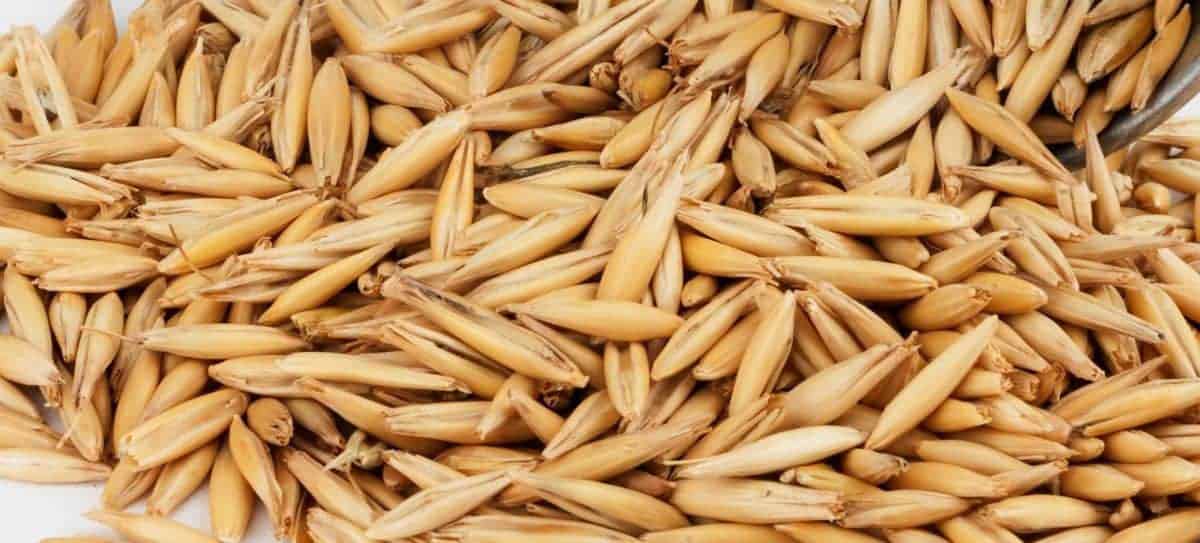What are the benefits of a low-starch feed?

Giving your horse high-starch feeds such as oats and barley can potentially lead to him developing health problems. In this article, Nicola Tyler, the Nutrition Director for TopSpec, explains why low-starch feeds could be a better option for your horse’s diet.
What is starch?
In nutritional terms starch is a simple carbohydrate. It is formed from long (poly) chains of sugars (saccharides) so it is called a polysaccharide.
Starch can be digested by the horse in its small intestine, but only in small amounts. This is because the polysaccharide chains are broken down by amylase which is only produced in limited amounts by the pancreas, which secretes it into the small intestine.
Amylase breaks starch down to maltose (a disaccharide, which is just two sugar molecules joined together) which is then broken down to glucose, by maltase, and absorbed through the small intestine wall into the bloodstream ready for use or storage.
Problems occur when a) large feeds, high in starch, cause high levels of glucose to enter the bloodstream and/or b) undigested starch passes through the small intestine into the large intestine where it is fermented with undesirable consequences.
How could horses benefit from a low-starch feed?
Feeds high in starch can either cause, or contribute to the following list of problems in horses: –
- Inefficient hindgut digestion
- Diarrhoea
- Certain forms of colic
- Laminitis
- Gastric and colonic ulcers
- ‘Tying-Up’
- O.D.
- Stereotypical behaviour
- Excitable, ‘stressy’ or ‘grumpy’ behaviour
Some typical starch levels in ingredients commonly used in horse feeds: –
- Unmolassed sugar beet pulp 1%
- Alfalfa 2%
- Soya (extracted, high protein) 4%
- Linseed (extracted) 7%
- Oatfeed 12%
- Wheatfeed 21%
- Oats 37%
- Barley 50%
- Wheat 60%
- Maize 62%
Unmolassed sugar beet pulp and alfalfa are often fed as straights and are clearly suitable where low starch ingredients are required. Soya and linseed are used in top specification, high protein, conditioning feed balancers, which helps to make them low in starch. Oatfeed and wheatfeed (fine forms of bran) are widely used in horse feeds. The starch level in oats make them the most suitable cereal to use (albeit in moderation) when starch levels in the diet need to be controlled, but some cereal is essential.
Scientists’ recommendations for feeding starch
- If there are starch-related issues, or concerns that they might arise, then scientists recommend that a maximum of 1g starch/kg bodyweight/meal is fed. This means that only up to 500g starch can be fed in each meal to a 500kg horse. Although this is limiting it means that a feed containing 25% starch could theoretically be fed. In practice many feeds now contain below 10-15% starch as the anecdotal evidence for their benefits is high.
However horses and ponies prone to, being treated for, or recovering from laminitis need their complete diet (i.e. including forage) restricting to below 10-12% NSC (Non-Structural Carbohydrate, which can be thought of as sugar and starch combined).
Because of the benefits, nutritionists often stick to such a low level when recommending feeds for horses with any of the problems listed above and that is what many horse owners now look for.
So look out for products described as ‘low-starch’ or low ‘sugar and starch’ if you feel your horse may benefit. Such products will always be cubes or pellets, it is impossible to make a mix with less than 10% sugar + starch.
How much to feed
The total level of starch a horse ingests per meal will clearly be affected by the amount fed, so if a horse needs a low-starch diet then feed only small amounts, using a top-specification feed balancer to minimise meal size and allow maximum forage consumption. In many situations it is important to control the level of NSC in the forage component of the diet as well. If in any doubt consult experienced equine nutritionists.
You can contact Nicola’s team of vets and nutritionists free of charge, on the TopSpec Multiple-Award-Winning Helpline: 01845-565030.
TopSpec is sponsoring Horse & Country’s coverage of HOYS. For all the latest news from the show, click here.






